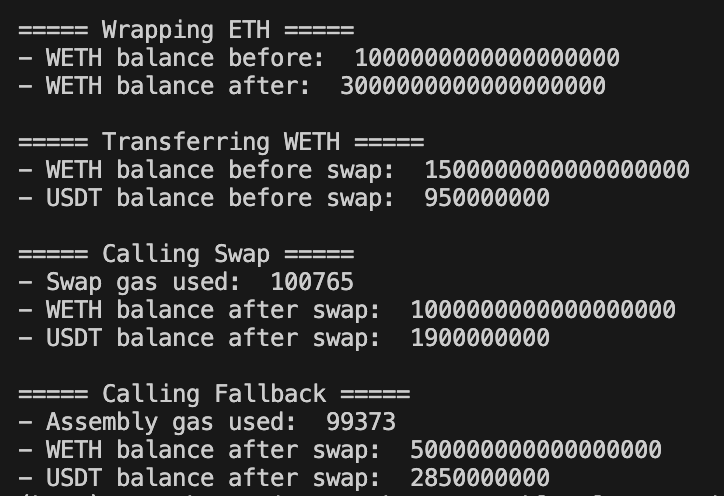[root@localhost ~]# vim 11.sh
#关闭防火墙
systemctl stop firewalld
setenforce 0
#1.接收用户部署的服务名称
read -p "服务名称:(nginx)" server_name
if [ $server_name != nginx ];then
echo "输入的不是nginx,脚本退出"
exit 1
fi
# 判断是否安装了指定服务#command -v和rpm -q 可能无法精确识别服务是否安装,可能是已经安装识别为未安装
#可能未安装识别为已安装
#上面两个命令应该是可以识别,但不知道为什么无法像which一样精确识别
#systemctl status 服务名:当服务未安装是,返回会显示Unit [服务名].service could not be found.
#a=`systemctl status $server`
#if [ $a == "Unit $server.service could not be found." ];#这个命令可能出现“==”号附近会报错
#或者无法精确识别
#if `command -v $service_name &>/dev/null`; then
#if `rpm -q $service_name &>/dev/null`; then#&>:是一种重定向操作符。它将标准输出(
stdout)和标准错误输出(stderr)合并到一起进行重定向#which nginx &>/dev/null:这个命令主要用于检查系统中是否能找到
nginx命令,并且在检查过程中不显示任何与查找相关的输出内容,脚本可以根据这个命令的退出状态码(如果能找到nginx命令,退出状态码为 0;否则为非 0)来进一步判断nginx是否已安装或者在系统路径中有正确的配置if which nginx &>/dev/null; then
#已安装;自定义网站配置路径为/www;并创建共享目录和网页文件;重启服务
echo "nginx已安装"
#web_path配置路径
web_path="/www"
mkdir -p $web_path
#配置文件路径
config_path="/etc/nginx/conf.d"
#配置文件
touch $config_path/new_test.conf
config_path_file="$config_path/new_test.conf"
#配置文件配置#通过
#cat << EOF > 文件名
#内容
#EOF
#的方式向文件中写入内容
cat << EOF > $config_path_file
server{
listen 80;
root $web_path;}
EOF
# 创建共享目录和网页文件
#共享目录
shared_path="$web_path/shared"
mkdir -p $shared_path
#网页文件
#往网页文件里写入内容,测试用
echo "this is a test" > $web_path/index.html
#重启nginx服务
systemctl restart $server_name
else
echo "nginx未安装"
mount /dev/sr0 /mnt
dnf install nginx -y
echo "nginx安装成功"
#web_path配置路径
web_path="/www"
mkdir -p $web_path
#配置文件路径
config_path="/etc/nginx/conf.d"
#配置文件
touch $config_path/new_test.conf
config_path_file="$config_path/new_test.conf"
#配置文件配置
cat << EOF > $config_path_file
server{
listen 80;
root $web_path;}
EOF
# 创建共享目录和网页文件
#共享目录
shared_path="$web_path/shared"
mkdir -p $shared_path
#网页文件
#往网页文件里写入内容,测试用
echo "this is a test" > $web_path/index.html
#重启nginx服务
systemctl restart $server_name
fi
# 测试服务是否成功运行#systemctl is-active 服务名
#查看服务是否运行,如果运行返回“active”
live=`systemctl is-active $server_name`
if [ $live == active ];then
echo "服务成功运行,下面是网站内容"
#已运行,访问网站
curl `hostname -I`
else
#未运行,提示服务未启动,并显示自定义的配置文件内容
echo "服务未启动"
echo "下面是nginx主配置文件内容"#cat 文件名
#查看文件内容
cat $config_path_file
fiecho "我是柏益伟" | mail -s "作业4" -a 11.sh 15380914067@163.com
邮箱配置:
#挂载
[root@localhost ~]# mount /dev/sr0 /mnt
#安装s-nail邮箱服务
[root@localhost ~]# dnf install s-nail -y
#在配置文件的末尾添加配置
[root@localhost ~]# vim /etc/s-nail.rc############################
#网易邮箱@163.com
#smtp-auth-password要开启网易邮箱的IMAP/SMTP服务,得到的授权码
set from=15380914067@163.com
set smtp=smtp.163.com
set smtp-auth-user=15380914067@163.com
set smtp-auth-password=JBntypapSgHPrMX5
set smtp-auth=login
# 自己的邮箱命令格式:
#-a 文件名;把文件发送通过邮箱发送
echo "我是柏益伟" | mail -s "作业4" -a 11.sh 15380914067@163.com



















